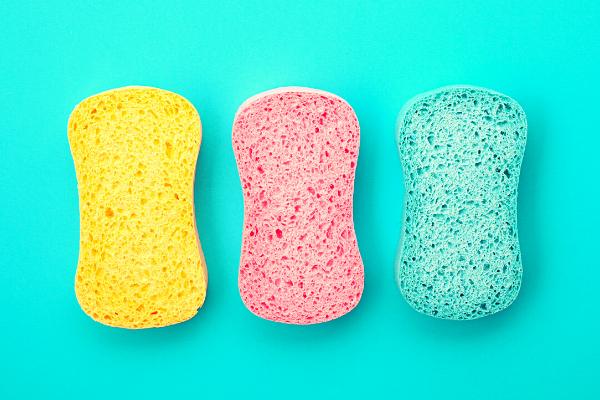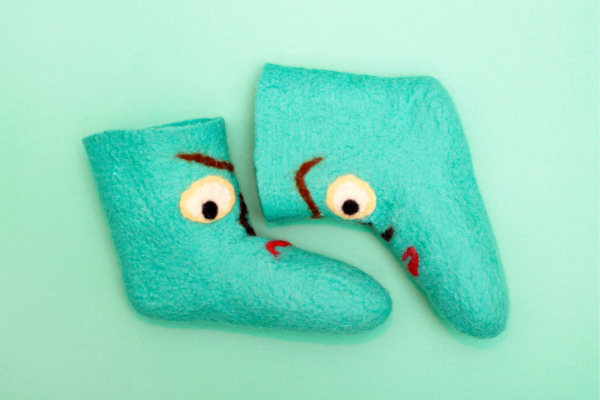
Introduction to Deep Cleaning: Why It’s Important and How Often You Should Do It
Deep cleaning is an essential part of maintaining a clean and healthy home. While regular cleaning tasks like dusting and vacuuming are important, deep cleaning goes a step further by targeting hidden dirt, grime, and allergens that can accumulate over time. Deep cleaning involves thorough cleaning of every nook and cranny in your home, ensuring that even the hard-to-reach areas are spotless.
One of the main reasons why deep cleaning is important is because it helps to improve indoor air quality. Over time, dust, pet dander, and other allergens can build up in your home, leading to respiratory issues and allergies. Deep cleaning helps to remove these allergens, creating a healthier living environment for you and your family.
The frequency of deep cleaning will depend on various factors such as the size of your home, the number of occupants, and the level of cleanliness you desire. As a general rule of thumb, it is recommended to deep clean your home at least once every three to six months. However, if you have pets or allergies, you may need to deep clean more frequently.
Essential Cleaning Tools and Products You’ll Need for a Deep Clean
To effectively deep clean your home, you will need a variety of cleaning tools and products. Here are some essential items you should have on hand:
Essentials
- Microfiber cloths: These are great for dusting surfaces and wiping away dirt and grime.
- Scrub brushes: Use different sizes of scrub brushes to tackle tough stains on various surfaces.
- Vacuum cleaner: A good quality vacuum cleaner with attachments is essential for deep cleaning carpets, upholstery, and hard-to-reach areas.
- Mop: Choose a mop that is suitable for the type of flooring in your home.
- Squeegee: This is useful for cleaning windows and glass surfaces.
- Broom and dustpan: These are essential for sweeping up dirt and debris.
Cleaning Products
- All-purpose cleaner: This is a versatile cleaner that can be used on a variety of surfaces.
- Glass cleaner: Use this to clean windows, mirrors, and other glass surfaces.
- Bathroom cleaner: Look for a cleaner specifically designed for removing soap scum and grime in the bathroom.
- Carpet cleaner: Choose a carpet cleaner that is suitable for your type of carpet and follow the instructions carefully.
- Upholstery cleaner: Look for a cleaner that is safe to use on your specific type of upholstery.
- Floor cleaner: Use a floor cleaner that is suitable for the type of flooring in your home.
Room-by-Room Guide: Tips for Deep Cleaning Your Kitchen, Bathroom, and Living Spaces
1. Kitchen deep cleaning tips:
- Start by decluttering and organising your kitchen cabinets and drawers. Remove expired food items and donate any unused kitchen gadgets or appliances.
- Clean the inside of your refrigerator by removing all the shelves and drawers and washing them with warm soapy water. Wipe down the interior of the fridge with a mixture of water and vinegar to remove any odours.
- Deep clean your oven by removing the racks and soaking them in warm soapy water. Use an oven cleaner to remove any baked-on grease or food residue.
- Scrub the sink with a mixture of baking soda and water to remove stains and odors. Don’t forget to clean the faucet and drain as well.
- Wipe down all countertops, backsplashes, and cabinet doors with an all-purpose cleaner. Pay special attention to areas that are prone to grease buildup.
Bathroom deep cleaning tips:
- Start by removing all items from your bathroom cabinets and drawers. Discard any expired medications or beauty products.
- Scrub the bathtub, shower walls, and tiles with a bathroom cleaner to remove soap scum and grime. Use a toothbrush or scrub brush to clean hard-to-reach areas.
- Clean the toilet bowl with a toilet cleaner and scrub brush. Don’t forget to clean the outside of the toilet, including the base and the tank.
- Wipe down all surfaces, including countertops, sinks, and mirrors, with an all-purpose cleaner. Use a glass cleaner to clean the mirrors and any glass surfaces.
- Sweep and mop the bathroom floor, paying special attention to corners and edges.
3. Living spaces deep cleaning tips:
- Start by decluttering and organising your living room. Remove any items that don’t belong and find a designated spot for everything else.
- Dust all surfaces, including furniture, shelves, and electronics, using a microfiber cloth or duster. Don’t forget to dust ceiling fans and light fixtures as well.
- Vacuum upholstery using the appropriate attachment. If your upholstery is stained or dirty, consider using an upholstery cleaner.
- Clean windows and glass surfaces using a glass cleaner and a squeegee. Don’t forget to clean window sills and tracks as well.
- Sweep or vacuum the floors, depending on the type of flooring in your living room. Mop the floors if necessary.
Deep Cleaning Carpets, Upholstery, and Floors: Expert Techniques
1. Carpet deep cleaning tips:
- Start by vacuuming the carpet thoroughly to remove loose dirt and debris.
- Treat any stains or spots with a carpet stain remover. Follow the instructions on the product carefully.
- Use a carpet cleaner to deep clean the entire carpet. Follow the instructions on the cleaner and make sure to ventilate the room properly.
- Allow the carpet to dry completely before walking on it or replacing furniture.
2. Upholstery deep cleaning tips:
- Check the care label on your upholstery for any specific cleaning instructions.
- Vacuum the upholstery using the appropriate attachment to remove loose dirt and debris.
- Treat any stains or spots with an upholstery stain remover. Test the product on a small, inconspicuous area first to make sure it doesn’t damage the fabric.
- Use an upholstery cleaner to deep clean the entire piece of furniture. Follow the instructions on the cleaner and make sure to ventilate the room properly.
- Allow the upholstery to dry completely before using or replacing cush
3. Floor deep cleaning tips:
- Sweep or vacuum the floor to remove loose dirt and debris.
- Use a mop or steam cleaner to deep clean the floor. Follow the instructions on the cleaner and make sure to ventilate the room properly.
- Pay special attention to high traffic areas and any stains or spills.
- Allow the floor to dry completely before walking on it or replacing furniture.
Deep Cleaning Your Appliances: Fridge, Oven, and Dishwasher
1. Fridge deep cleaning tips
- Start by removing all food items from your fridge and discarding any expired or spoiled items.
- Remove all shelves and drawers and wash them with warm soapy water. Wipe down the interior of the fridge with a mixture of water and vinegar to remove any odours.
- Clean the exterior of the fridge, including the door handles and gaskets, with an all-purpose cleaner.
- Vacuum or brush the condenser coils at the back of the fridge to remove dust and debris.
- Replace all shelves and drawers and organise your food items before returning them to the fridge.
2. Oven deep cleaning tips
- Start by removing all racks from your oven and soaking them in warm soapy water. Use an oven cleaner to remove any baked-on grease or food residue.
- Wipe down the interior of the oven with an oven cleaner, paying special attention to areas that are prone to grease buildup.
- Clean the oven door, including the glass, with an all-purpose cleaner or a glass cleaner.
- Replace the racks once they are clean and dry.
3. Dishwasher deep cleaning tips
- Start by removing any food debris from the bottom of the dishwasher and the filter.
- Place a dishwasher-safe cup filled with white vinegar on the top rack of the dishwasher and run a hot water cycle.
- Sprinkle baking soda on the bottom of the dishwasher and run another hot water cycle.
- Wipe down the interior of the dishwasher, including the door and gaskets, with an all-purpose cleaner.
- Clean the exterior of the dishwasher with an all-purpose cleaner or a stainless steel cleaner.
Decluttering and Organising: Tips for Streamlining Your Home and Keeping It Tidy
1. Decluttering tips
- Start small and focus on one area at a time. This could be a drawer, a closet, or a room.
- Sort items into three categories: keep, donate/sell, and throw away. Be ruthless and only keep items that you truly need or love.
- Find a designated spot for everything you decide to keep. Use storage bins, baskets, or shelves to help keep things organised.
- Consider implementing a “one in, one out” rule. For every new item you bring into your home, get rid of something else to avoid clutter buildup.
2. Organising tips
- Use storage solutions such as bins, baskets, and shelves to help keep things organised. Label containers to make it easier to find items when you need them.
- Group similar items together. For example, keep all cleaning supplies in one area and all kitchen utensils in another.
- Utilise vertical space by installing shelves or hooks on walls. This can help maximise storage space in small areas.
- Create a system for managing paperwork and mail. Use folders or binders to keep important documents organised and designate a specific spot for incoming mail.
Natural Cleaning Solutions: Eco-Friendly Alternatives for a Deep Clean
1. Natural cleaning solutions
- Vinegar: Vinegar is a versatile cleaning agent that can be used to clean windows, countertops, and bathroom fixtures. Mix equal parts vinegar and water in a spray bottle and use it as an all-purpose cleaner.
- Baking soda: Baking soda is great for removing odours and stains. Sprinkle baking soda on carpets, upholstery, and mattresses before vacuuming to freshen them up.
- Lemon juice: Lemon juice is a natural disinfectant and can be used to clean cutting boards, countertops, and bathroom fixtures. Mix lemon juice with water in a spray bottle and use it as a surface cleaner.
- Hydrogen peroxide: Hydrogen peroxide is an effective stain remover and can be used to remove tough stains on carpets, upholstery, and clothing. Test it on a small, inconspicuous area first to make sure it doesn’t bleach the fabric.
- Essential oils: Essential oils such as tea tree oil, lavender oil, and eucalyptus oil have natural antibacterial properties. Add a few drops of your favourite essential oil to your cleaning solutions for a fresh scent.
2. Benefits of using eco-friendly cleaning products
- Eco-friendly cleaning products are safer for you and your family as they do not contain harsh chemicals that can be harmful if ingested or inhaled.
- They are better for the environment as they do not contribute to air and water pollution.
- They are often more cost-effective in the long run as many eco-friendly cleaning products can be made at home using simple ingredients like vinegar, baking soda, and lemon juice.
- They are versatile and can be used for multiple cleaning tasks, reducing the need for multiple specialised cleaning products.
Deep Cleaning for Allergies and Asthma: How to Reduce Dust and Improve Indoor Air Quality
1. Importance of deep cleaning for allergies and asthma
- Deep cleaning helps to remove allergens such as dust mites, pet dander, and pollen from your home, reducing the risk of allergic reactions.
- Regular deep cleaning can help to improve indoor air quality, making it easier for people with allergies and asthma to breathe.
- Deep cleaning can also help to reduce the risk of mould growth, which can trigger allergies and asthma symptoms.
2. Tips for reducing dust and improving indoor air quality
- Dust surfaces regularly using a microfiber cloth or duster. Avoid using feather dusters as they can spread dust around.
- Vacuum carpets, upholstery, and curtains regularly using a vacuum cleaner with a HEPA filter. This will help to trap allergens and prevent them from being released back into the air.
- Wash bedding, including sheets, pillowcases, and blankets, in hot water at least once a week to kill dust mites.
- Keep windows closed during peak pollen seasons to prevent allergens from entering your home. Use an air purifier with a HEPA filter to further improve indoor air quality.
- Avoid using scented candles, air fresheners, and cleaning products that contain strong fragrances as they can trigger allergies and asthma symptoms.
Time-Saving Strategies: How to Deep Clean Your Home Quickly and Efficiently
1. Time-saving tips
- Break down your deep cleaning tasks into smaller, manageable chunks. Focus on one room or area at a time to avoid feeling overwhelmed.
- Set a timer for each task to stay on track and avoid spending too much time on one area.
- Use multipurpose cleaning products that can be used on multiple surfaces. This will save you time and reduce the number of products you need to use.
- Delegate tasks to other members of your household. Divide the deep cleaning tasks among family members to make the process quicker and more efficient.
- Use cleaning tools and products that are designed to make the cleaning process faster, such as microfiber cloths, steam cleaners, and spray mops.
2. Efficient cleaning techniques
- Start from the top and work your way down. This will prevent dust and dirt from falling onto surfaces that have already been cleaned.
- Use a systematic approach when cleaning each room. Start with decluttering, then dusting, followed by vacuuming or sweeping, and finish with mopping or wiping down surfaces.
- Use the right tools for each task. For example, use a microfiber cloth or duster for dusting, a vacuum cleaner with attachments for upholstery and hard-to-reach areas, and a mop or steam cleaner for floors.
- Clean as you go. Instead of letting dirt and messes accumulate, clean up spills and messes as soon as they happen to prevent them from becoming more difficult to clean later on.
- Develop a routine and stick to it. Set aside specific days or times for deep cleaning tasks to ensure that they get done regularly.
Maintenance Tips: How to Keep Your Home Clean and Tidy Between Deep Cleaning Sessions
1. Maintenance tips
- Develop a daily cleaning routine that includes tasks such as making the bed, doing the dishes, and wiping down surfaces.
- Encourage everyone in your household to clean up after themselves. Teach children to put away their toys and belongings after use.
- Implement a “clean as you go” policy in the kitchen.
- Wash dishes as you cook and wipe down counters and stove tops to prevent the buildup of grease and grime.
- Regularly vacuum high-traffic areas and sweep hard floors to minimise dust and dirt accumulation. Consider using doormats to reduce the amount of outdoor debris brought into your home.
- Keep cleaning supplies easily accessible in various rooms, making it convenient to address spills and messes promptly. Ensure that everyone knows where to find these supplies and how to use them safely.
- Rotate and launder linens, such as bedsheets, pillowcases, and towels, on a regular basis to maintain a fresh and hygienic living environment.
- Inspect and replace air filters in heating, ventilation, and air conditioning systems according to manufacturer recommendations, promoting better air quality and reducing allergens.
- Regularly declutter your living spaces by organising and removing items that are no longer needed. Donate or discard items that no longer serve a purpose to minimise clutter and create a more spacious and inviting atmosphere.
- By following these maintenance tips, you can keep your home clean and tidy between deep cleaning sessions, ensuring a comfortable and healthy living environment for you and your family.
Your questions answered:
What does it mean to do a deep clean?
The term “deep clean” refers to a thorough and comprehensive cleaning process that goes beyond regular maintenance. Baseboards, light fixtures, and behind furniture are often overlooked during routine cleaning. The goal of deep cleaning is to achieve a higher level of cleanliness and hygiene in a living space by addressing tough stains, grime, and buildup.
How do I deep clean my bedroom?
Declutter and organise all surfaces, including closets and drawers, before deep cleaning your bedroom. Wipe down furniture, windowsills, and baseboards. Clean the floors, including under the bed and furniture, and spot treat any stains. Wash all bedding, including pillows, comforters, and mattress covers. Make sure light fixtures, switch plates, and doorknobs are clean. Last but not least, open windows to let fresh air circulate.
How do I enlist professional deep cleaning services?
Start by researching reputable cleaning companies in your area. Find companies with positive customer reviews and a track record of high-quality deep cleaning. Check the cleaning companies’ service offerings, pricing, and availability. Discuss their deep cleaning process, including the specific tasks they perform and the products they use. Ask about additional charges for specific services or special requests. Schedule an appointment that works for both parties and discuss any specific cleaning priorities.


 YOU
YOU





 Money
Money





 FOOD
FOOD





 FAMILY LIFE
FAMILY LIFE




 HOME & GARDEN
HOME & GARDEN







 ORGANISE
ORGANISE

 EVENTS
EVENTS





 LIFESTYLE
LIFESTYLE


















